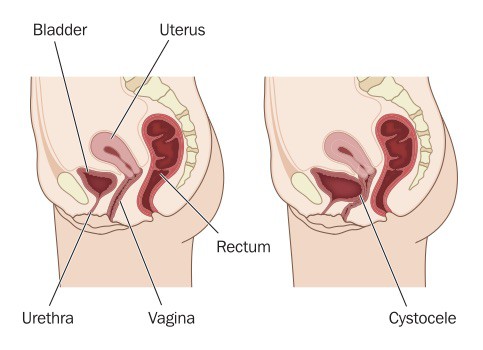Understanding Prolapsed Uterus After Birth: A Supportive Guide for New Moms
Welcome, Super Moms and Super Dads! If you’re here, you might have questions about something called a prolapsed uterus after birth, and we’re here to walk you through it with a smile. This guide is lovingly crafted to help you understand what a prolapsed uterus is, why it occurs, and how to manage it with grace. So, let’s shine some light on the subject and ensure you’re equipped with the know-how to tackle this postpartum curveball!
What is a Prolapsed Uterus?
A prolapse? After giving birth? Yep, it’s a thing. But don’t worry, it’s more common than you might think and, most importantly, manageable. A prolapsed uterus occurs when the uterus descends from its normal position into the vaginal canal due to weakened pelvic floor muscles and ligaments. It often happens after childbirth when your body has done the tremendous job of bringing a new little human into the world. Go, body!
Why Does Uterine Prolapse Happen Postpartum?
During pregnancy and childbirth, the muscles and ligaments that support your uterus stretch out like a well-loved elastic band. Sometimes, they don’t quite spring back to their original tension. Voila! That can lead to what’s known as uterine prolapse. Here are some factors that might up your chances of experiencing a prolapsed uterus after birth:
- Multiple pregnancies: The more pregnancies, the greater the stretch on your pelvic floor muscles.
- Vaginal delivery: The strain of childbirth can significantly weaken the structures holding your uterus in place.
- Large baby: Delivering a bigger bundle of joy can add extra strain during childbirth.
- Prolonged labor: A labor that lasts for many hours can fatigue pelvic floor muscles.
- Genetics: Sometimes, the tendency for prolapse can run in families.
But let’s not dwell on the whys. Let’s focus on what we can do about it!
Symptoms of a Prolapsed Uterus
Noticing a few extra physical feelings downstairs that you haven’t felt before? Here’s what to look out for:
- A feeling of fullness or pressure in your pelvis.
- A noticeable bulge in your vagina that wasn’t there pre-baby.
- Difficulty with urination or bowel movements.
- Back pain or aching in your lower belly.
- Sexual discomfort or issues.
Take a note of these symptoms, but remember, your healthcare provider is your go-to for personal medical advice.
Diagnosing a Prolapsed Uterus
If you suspect you might be dealing with a prolapsed uterus, the next step is a chat with your favorite healthcare professional. They’ll likely conduct a physical examination to determine the prolapse’s stage and provide you with the best course of action. No fear! You’re in good hands.
Managing and Treasuring Your Recovery Time
First things first, let’s get you comfortable. After birth, your body has undergone a beautiful transformation, and it’s crucial to take the recovery period seriously—with lots of self-love and pampering. Here are some tips to start managing a prolapsed uterus from home:
- Kegel exercises: These are the golden exercises for strengthening your pelvic floor muscles. Think of them as a mini workout for your downstairs region.
- Avoid heavy lifting: Leave the heavy stuff to someone else while you focus on getting those muscles back in shape.
- Use proper body mechanics: Bend those knees and keep your back straight when picking up things (even your cute baby).
Rest assured momma, with time and a little effort, your body can feel more like its old self again.
Remember, you’re not alone in this journey! Many women experience a prolapsed uterus after birth, and it’s just another part of the amazing story of motherhood. It’s important to focus on your wellbeing, seek support when you need it, and know that you’re doing an incredible job. Keep smiling, keep shining, and let’s help that uterus return to its rightful place!

5 Essential Things Parents Should Know in Preparing for a Prolapsed Uterus After Birth
Feeling prepared can take a bit of the stress off, right? Here are five key points to keep in mind as you prepare for or navigate a prolapsed uterus after birth:
- Educate Yourself Early: During your pregnancy, educate yourself about the possibility and symptoms of uterine prolapse. Knowledge is power, and knowing what to look for can help you catch any changes early.
- Pelvic Floor Health is a Priority: Begin pelvic floor exercises, such as Kegels, during pregnancy (with your doctor’s approval). Continual strengthening of these muscles can aid in both prevention and recovery should a prolapse occur.
- Plan for Postpartum Support: Arrange for help around the house after delivery. Having someone to assist with lifting and chores can minimize strain on your pelvic floor immediately after childbirth.
- Postpartum Check-ups are Crucial: Attend all postpartum check-ups and talk openly with your healthcare provider about any concerns. Regular medical appointments are vital for tracking your recovery.
- Stay Positive and Patient: Recovery and management of a prolapsed uterus may take time. Stay positive and give yourself grace. Your body has done something magnificent, and with care, it can heal.
Treatment Options for Prolapsed Uterus
Taking charge of your health is wonderful, and it’s essential to know your options. Depending on the severity of the prolapse, treatment can range from conservative to surgical. Here they are:
- Conservative Treatments: These include pelvic floor therapy, lifestyle changes, and pessaries (a device inserted into the vagina to support the uterus).
- Hormone Therapy: If appropriate, your healthcare provider might suggest estrogen therapy to strengthen the pelvic muscles and tissues.
- Surgery: In cases where conservative treatments aren’t effective, and if your family is complete, surgical options like hysterectomy or pelvic floor repair might be recommended.
Discussing these options with your healthcare provider will help you to make the best decision for your body and your lifestyle.
Nurturing Emotional Well-being During Recovery
Prolapse can take a toll not just on your body, but on your emotions too. It’s so important to nurture your mental health. Connect with support groups, talk to a therapist if needed, and surround yourself with positive energy. Practice self-care and remember that you’re not defined by this experience—you’re an amazing parent who is doing their very best each day!
Diet and Lifestyle Changes That Can Help
Food is fuel, and the right fuel can help your recovery. Focus on a balanced diet rich in fiber to avoid constipation, which can place additional stress on pelvic structures. Stay hydrated and maintain a healthy weight to reduce pressure on your pelvic floor. Take note:
- Whole grains, veggies, and fruits are your friends.
- Hydrate, hydrate, hydrate! Water is the way to go!
- Regular, low-impact exercise, as approved by your doctor, can support muscle tone and overall health.
Being prepared, informed, and proactive about your health can make all the difference in managing a prolapsed uterus after birth. Remember, every parent’s journey is unique, and you have an entire cheer squad in the form of your healthcare team, friends, family, and fellow parents rooting for you. Keep on being wonderful, and take it one day at a time!
See more great Things to Do with Kids in New Zealand here. For more information see here
Disclaimer
The articles available via our website provide general information only and we strongly urge readers to exercise caution and conduct their own thorough research and fact-checking. The information presented should not be taken as absolute truth, and, to the maximum extent permitted by law, we will not be held liable for any inaccuracies or errors in the content. It is essential for individuals to independently verify and validate the information before making any decisions or taking any actions based on the articles.




